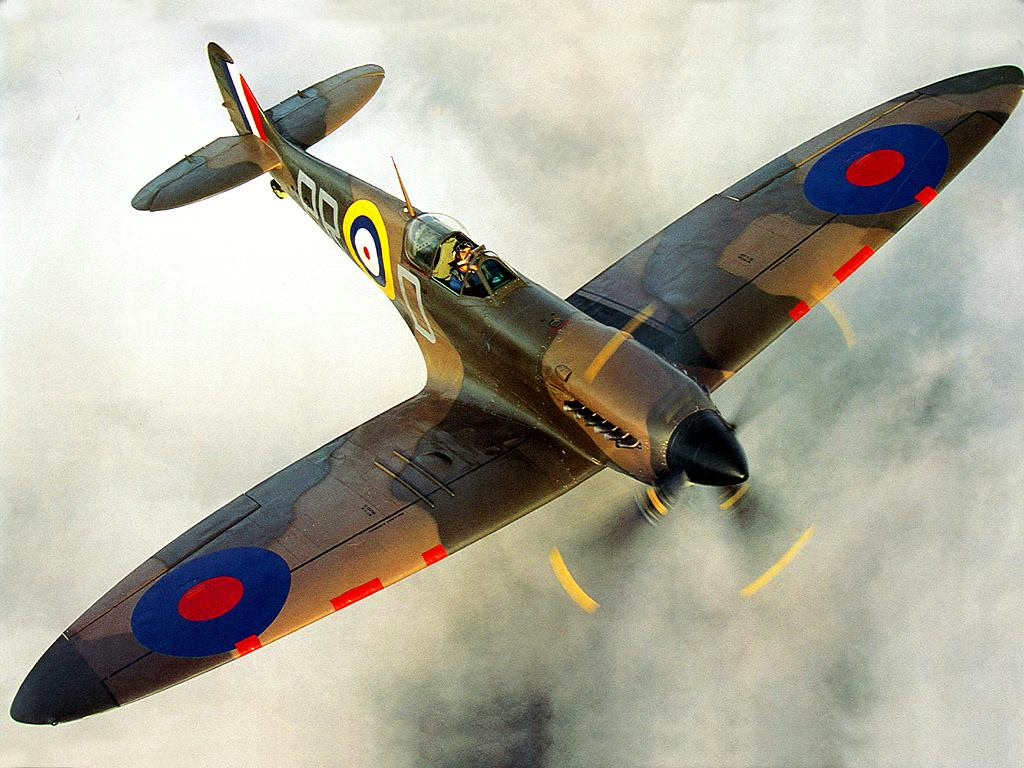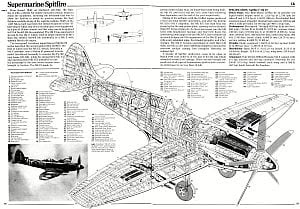Supermarine Spitfire History
Of all the fighters that have served with the Royal Air Force since its formation in 1918, none has achieved wider, no more widely deserved, fame than the Supermarine Spitfire.
No better example can be found of ”the right aeroplane being available at the right time”; it was the Spitfire, more than other single type, that allowed the RAF’s fighter squadrons during World War Two first to blunt the spearhead of the Luftwaffe’s attack on Britain and then to gain and maintain ascendancy over the German air force.
The Supermarine Spitfire existed in more than 40 major variants, but it served the RAF in only two principal roles, those of fighter and photographic reconnaissance. The Spitfire was a pilot’s aeroplane; not the easiest to fly, and a little unforgiving of tyros, it was universally liked by those who flew and fought in it for its all-round performance, its manoeuvrability and its lack of vices.
The Supermarine Spitfire began as a private venture replacing an earlier unsuccessful design to specification F.7/30, and emerged to fill a new one, F.37/34. An initial production order covered 310 for completion by March 1939, and production began in 1937. The first unit to be equipped was No 19 Squadron, Duxford in August 1938, a big step up from its Gloster Gauntlets. The Supermarine Spitfire prototype K5054 (Supermarine Type 300) was powered initially by a 990 hp (738 kW) Merlin ‘C’ engine. Captain J. ‘Mutt’ Summers flew it for the first time on 5 march 1936 at Eastleigh aerodrome, Southampton. The type 300 soon displayed superb handling qualities and performance, achieving a level speed of almost 350 mph (563 km/h), and on 3 June 310 Mk I aircraft were ordered to Specification F.16/36. This represented the first of nearly 23,000 of all marks, developed largely by Joe Smith, who succeeded the Supermarine chief designer – R.J.Mitchel – on the latter’s death on 11 June 1937.
These early Spitfire Is were powered by a 1,030 hp (768 kW) Rolls Royce Merlin II, driving a two-blade fixed-pitch wooden propeller. Ejector exhaust stubs were introduced, as well as a tailwheel in place of the prototype’s skid. Only four of the planned eight 0.303 in (7.7 mm) machine guns were installed as a result of supply shortages, and trailing-edge flaps and landing gear were raised and lowered manually.
Improvements were introduced quickly, including a bulletproof windscreen, a bulged canopy, armour plating behind the engine, hydraulics for actuation of flaps and landing gear, and a Merlin II engine driving a three-blade variable-pitch de Havilland metal propeller. The eight-gun aircraft were designated Spitfire IA, and 30 Mk IBs, with two machine-guns and one 20 mm cannon in each wing, were delivered in 1940 for operational trials.
By the outbreak of World War Two, nine full squadrons had been equipped, and Supermarine Spitfire of No 602 Squadron claimed the first victories of the war on October 16, 1939, destroying two Junkers Ju 88s and a Heinkel He 111. Further large orders were placed as the type was developed, and its role in the Battle of Britain alongside the Hawker Hurricane is history. Various marks of Spitfire served with 111 squadrons during World War Two, others continued postwar.
Supermarine Spitfire Specifications
| Aircraft Type: |
| fighter |
| Dimensions: |
| wingspan: 36 ft, 10 in |
| length: 32 ft, 8 in |
| height: 12 ft, 8 in |
| Weights: |
| empty: 6,600 lb |
| gross: 8,500 lb |
| Power plant: |
| 1 × 2,050 hp Rolls-Royce Griffon liquid-cooled in-line engine |
| Performance: |
| maximum speed: 448 mph |
| ceiling: 44,500 ft |
| maximum range: 460 mi |
| Armament: |
| 4 × 0.303 in calibre machine guns |
| 2 × 20 mm calibre cannons |
| up to 500 lb of bombs |
| Operational Use: |
| 1938–1954 |
Supermarine Spitfire Technical Drawings, Blueprints & Scale Model Plans
- Supermarine Spitfire scale model plans
- Supermarine Spitfire Mk I, II scale model plans
- Supermarine Spitfire Mk VB scale model plans
- Supermarine Spitfire Mk VB (Daimler-Benz DB 605A) scale model plans
- Supermarine Spitfire Mk IX scale model plans
- Supermarine Spitfire Mk 22/24 scale model plans
- Supermarine Seafire scale model plans
- Supermarine Seafire F Mk III scale model plans
- Supermarine Seafire F Mk 47 scale model plans










